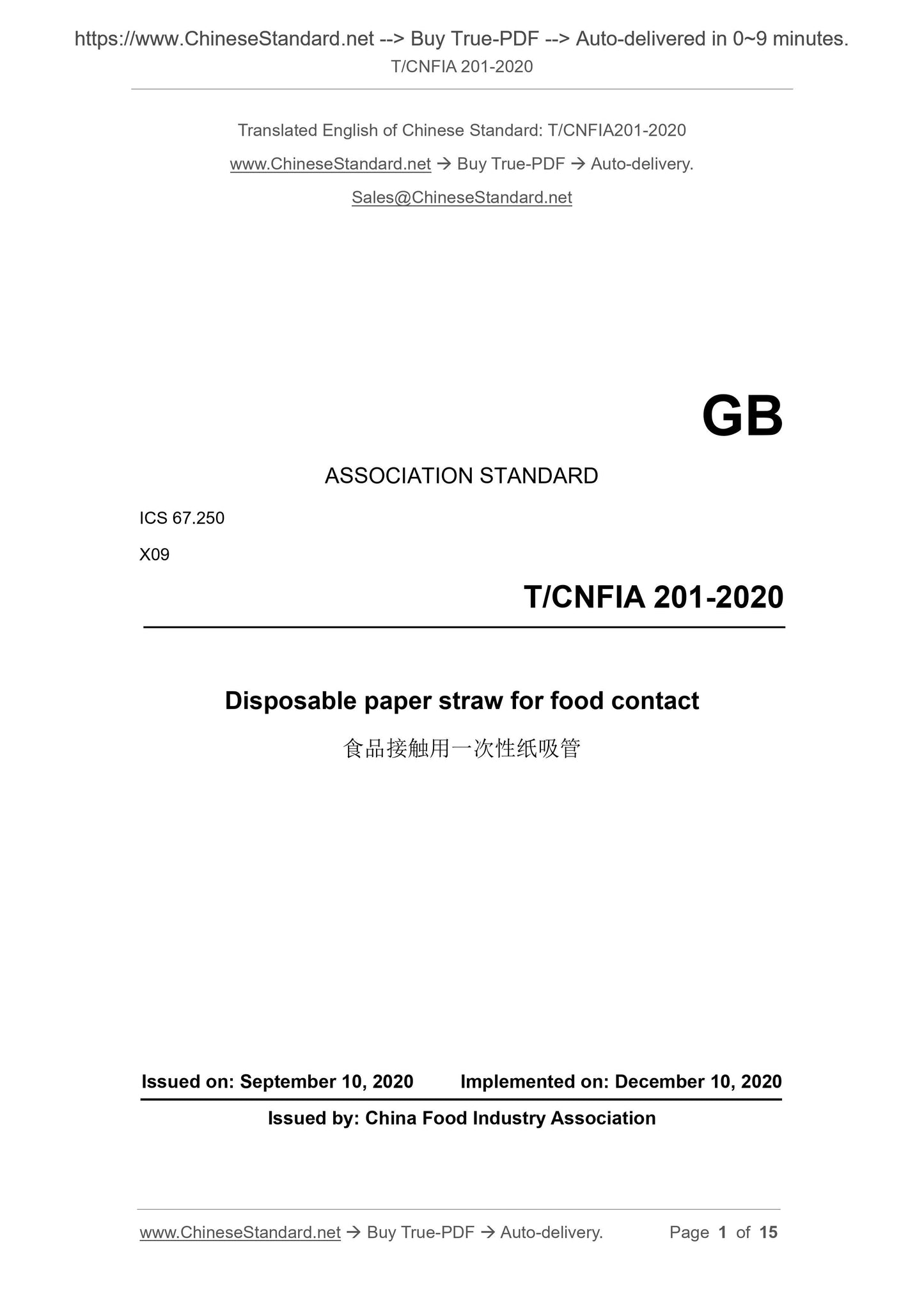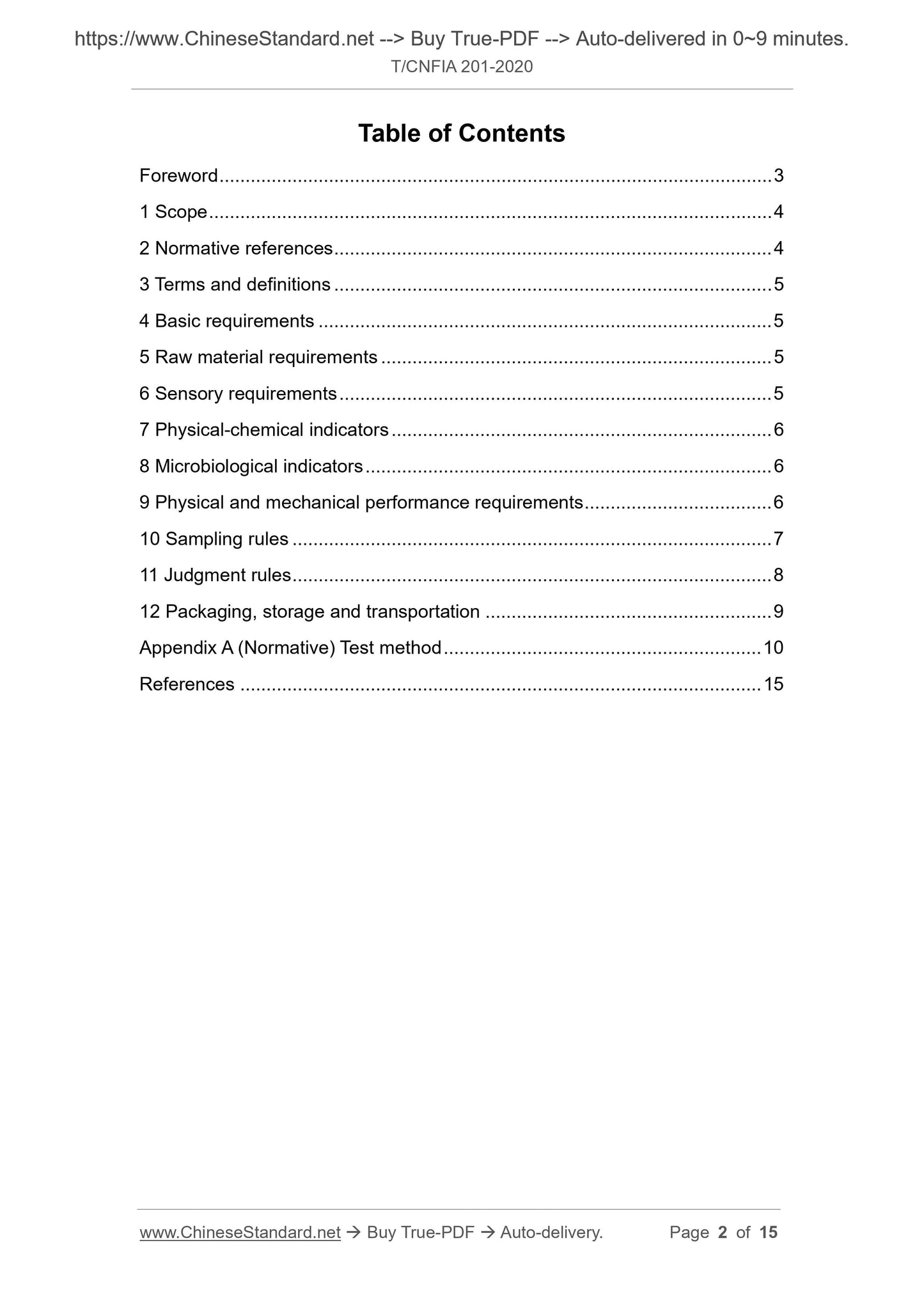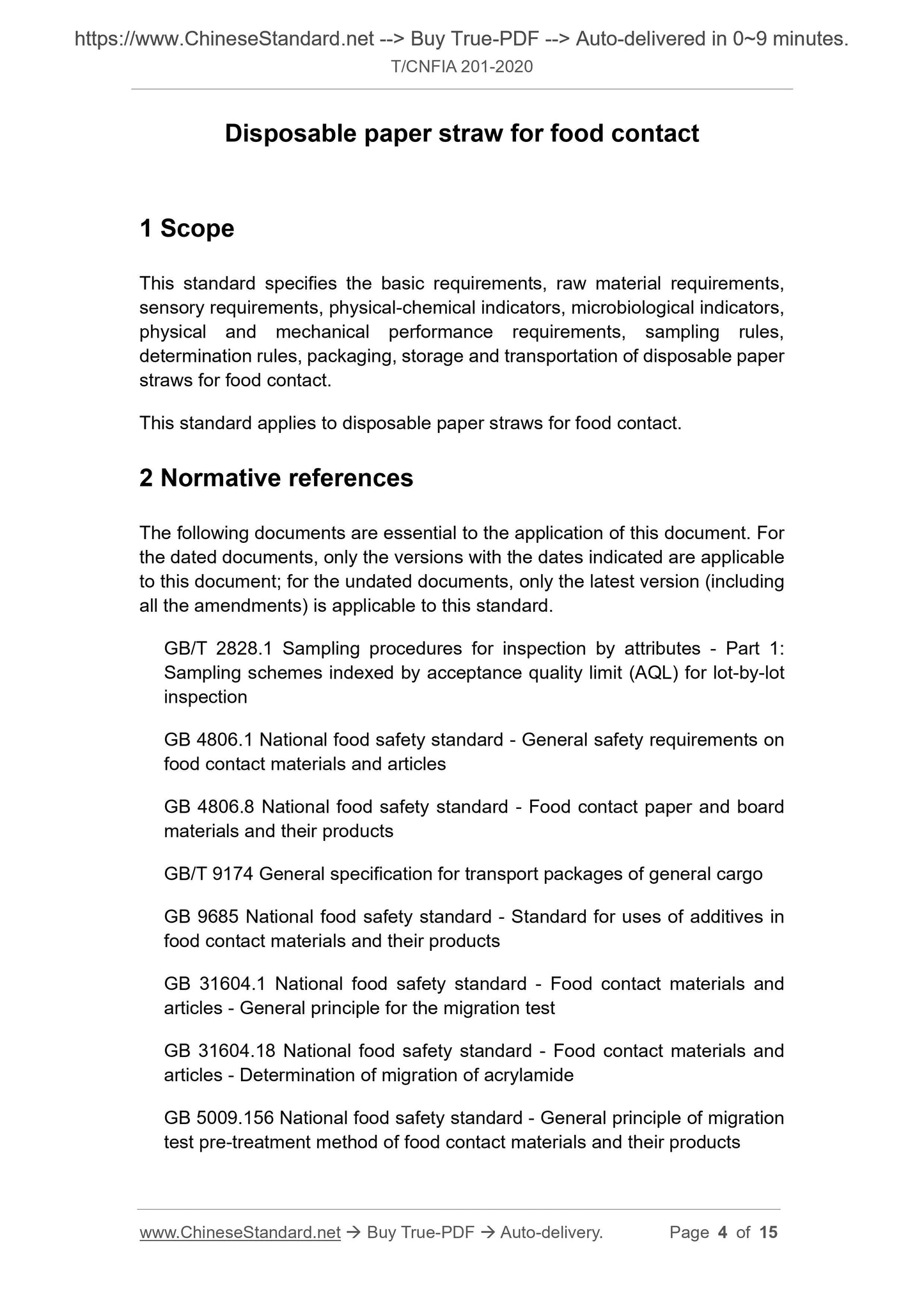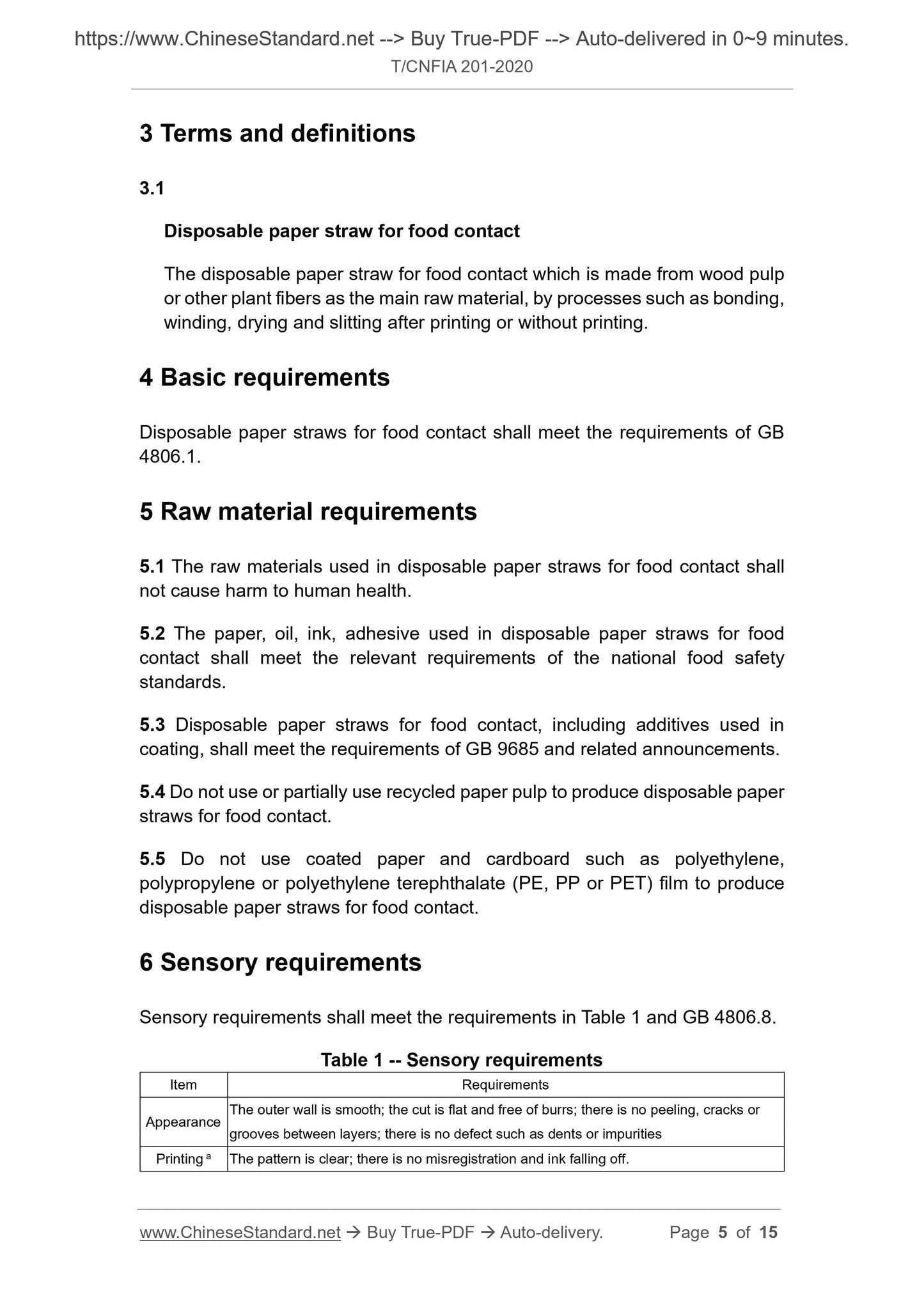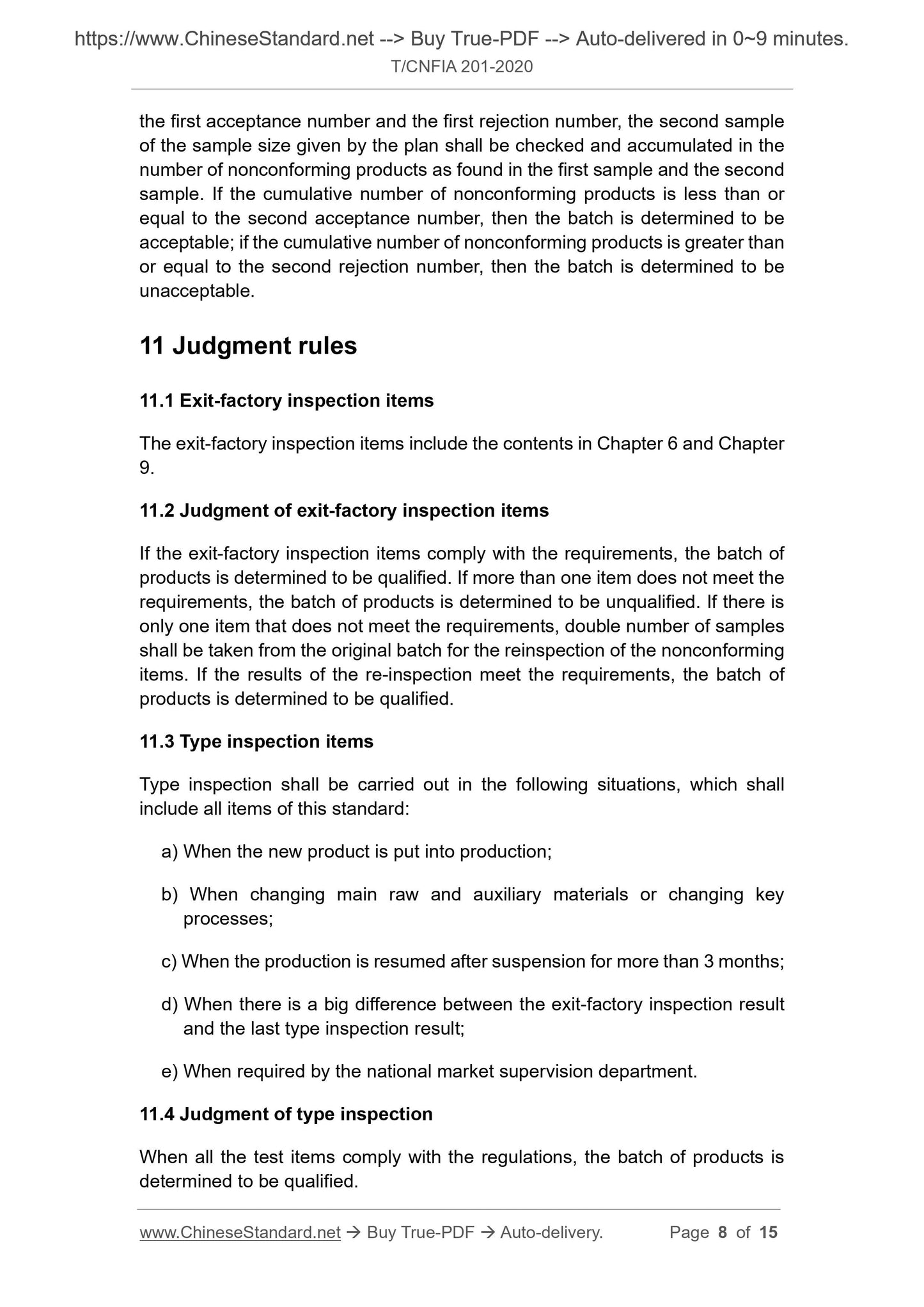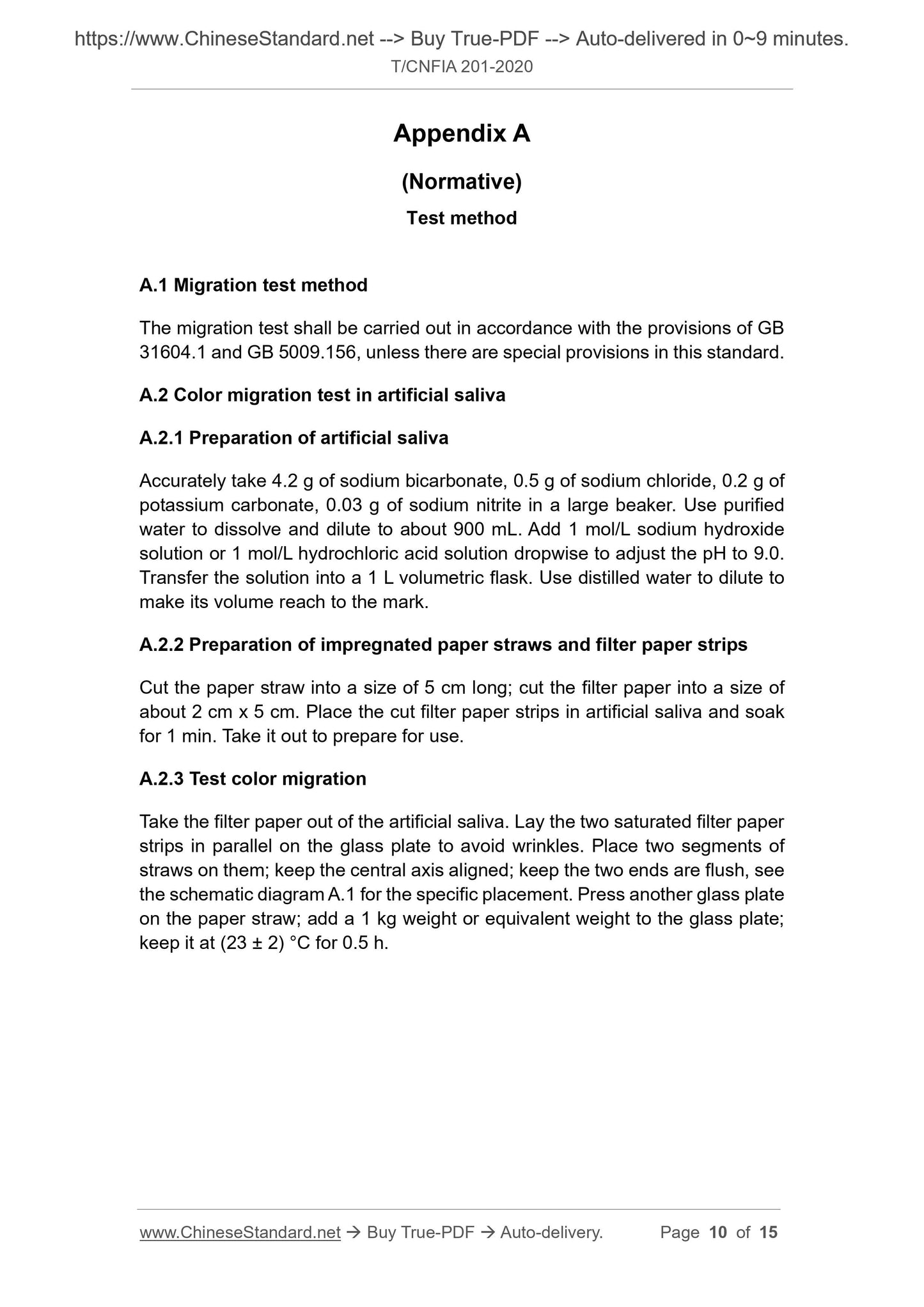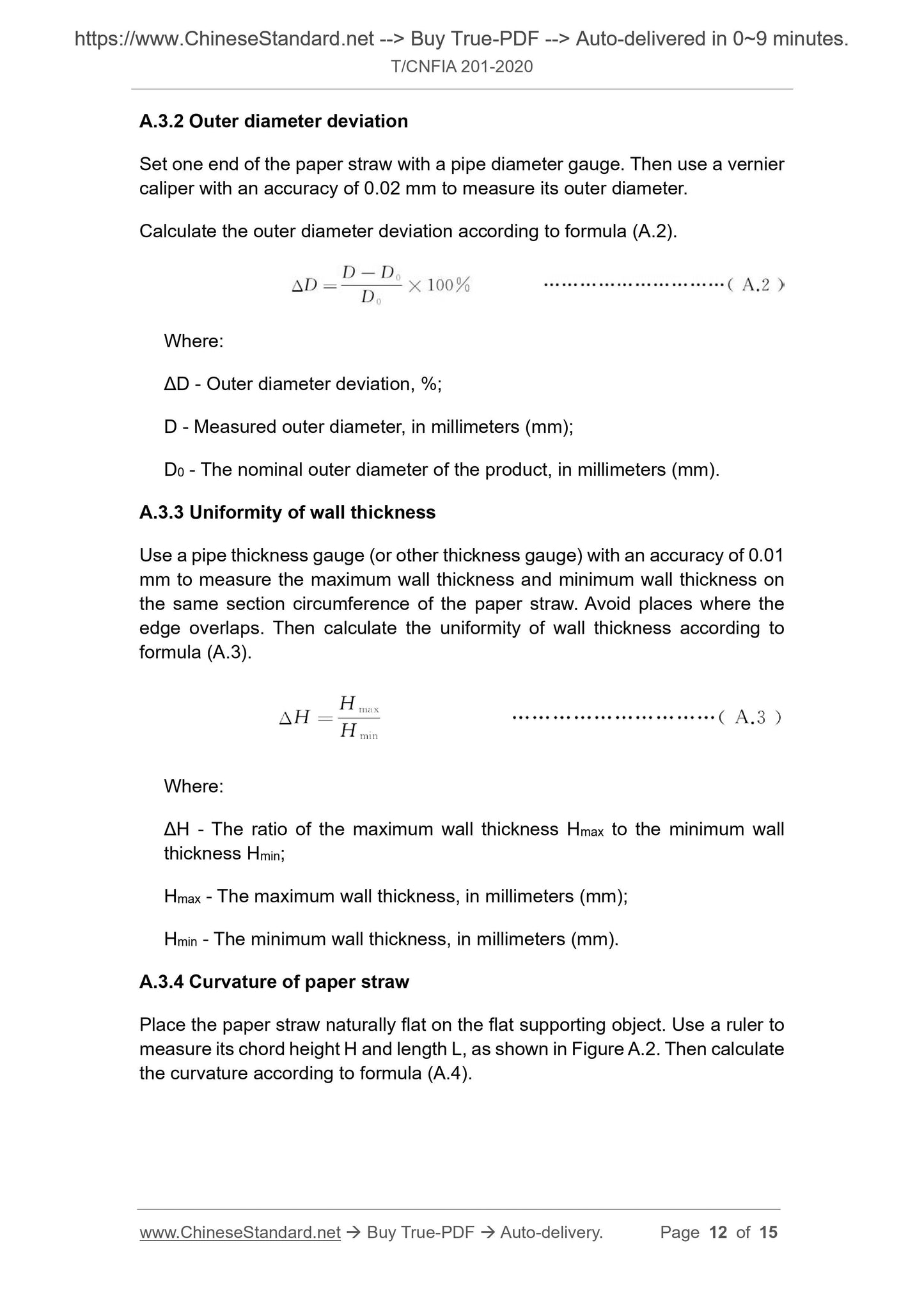1
/
of
7
www.ChineseStandard.us -- Field Test Asia Pte. Ltd.
TCNFIA201-2020 English PDF
TCNFIA201-2020 English PDF
Regular price
$245.00
Regular price
Sale price
$245.00
Unit price
/
per
Shipping calculated at checkout.
Couldn't load pickup availability
TCNFIA201-2020: Disposable paper straw for food contact
Delivery: 9 seconds. Download (and Email) true-PDF + Invoice.Get Quotation: Click TCNFIA201-2020 (Self-service in 1-minute)
Newer / historical versions: TCNFIA201-2020
Preview True-PDF
Scope
This standard specifies the basic requirements, raw material requirements,sensory requirements, physical-chemical indicators, microbiological indicators,
physical and mechanical performance requirements, sampling rules,
determination rules, packaging, storage and transportation of disposable paper
straws for food contact.
This standard applies to disposable paper straws for food contact.
Share
